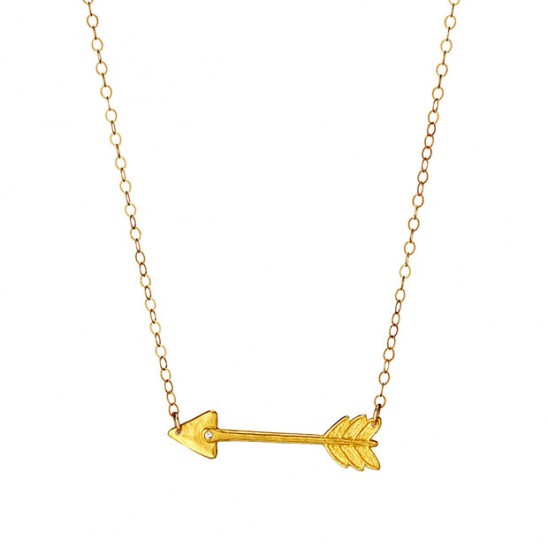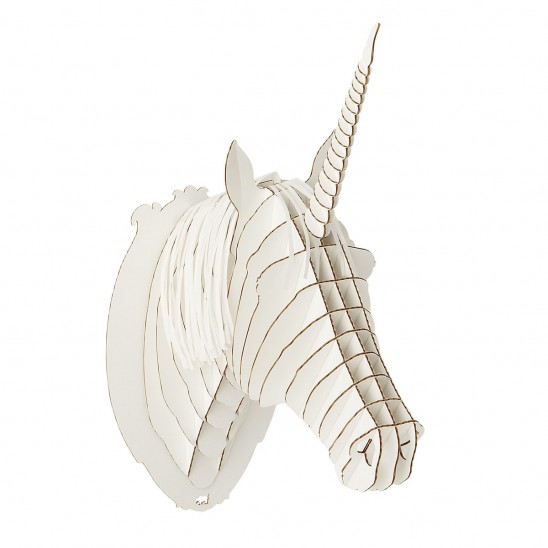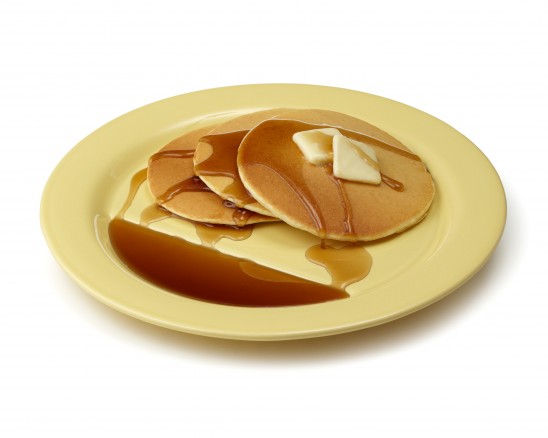We’ve all heard that you are what you eat, but flamingos are the poster birds for this aphorism. They’re best known for their bright pink plumage, but did you know that this color comes from their diet? Flamingos are born with white feathers, but they obtain a pink cast through eating brine shrimp, which contain generous amounts of beta-carotene. This same compound is found in carrots and is essential to vitamin A production for birds and humans alike. So, healthy flamingos in the wild are naturally a vivid pink-orange color, but their captive colleagues are kept in the pink with beta-carotene supplements. The plastic flamingos that live on lawns, however, get their color from industrial red dyes and do not need to be fed.
Nope. But if they had opposable thumbs, they would certainly be inclined to dust off the old embroidery thread. Studies have shown that cows form close bonds with others in their herd, displaying reductions in stress when they’re paired with their besties, as opposed to some random cow from down the meadow. These best friends tend to spend most of their time together, enjoying the leisurely pleasures of an afternoon on the farm as a platonic twosome. Dairy farmers are now starting to appreciate this udderly adorable friendship fact, as a happy cow produces more milk. Slumber party in the barnyard!
It certainly does beat the odds. It’s estimated that only one out of 10,000 people will be struck by lightning in their lifetime—although this is still more likely than winning millions in the lottery, which has odds in the neighborhood of 1 in 259 million. But one man named Roy Sullivan laid claim to the unluckiest luck in the world by being struck by lightning seven times. This was partly due to the fact that he worked a ranger in Shenandoah National Park and was exposed to a lot more storms than average. But it got to the point where Sullivan began to claim that clouds were actually following him. He started carrying a bucket of water with him whenever there was a storm, which came in handy several times because the lightning had a tendency to set his hair on fire. The chances of an ordinary person being struck by lightning seven times are somewhere around 1 in 10,000,000,000,000,000,000,000,000,000. Lucky guy! (And he almost got even luckier: once he was helping his wife hang laundry out to dry, and she was struck by lightning instead of him!)
If by unicorns, you mean majestic marine life with a unicorn-like horn, then yes! They do! Though the existence of the narwhal might not be uncommon knowledge to all, a quick office poll is all you need to realize that not everyone has been clued in to this myth-worthy creature. The narwhal is an arctic whale with what looks like a tusk. In medieval times, this tusk was given to royalty and passed off as a unicorn horn. However, that tusk is actually a small town dentist’s dream—it’s technically a tooth that grows in a counterclockwise spiral for up to ten feet. Try fitting that with a retainer.
That oh-so-stylish, late-Sunday-morning institution is not some natural expression of human need that evolved over the centuries like, say, dinner. It was the brainchild of an Englishman named Guy Beringer. As described in his 1895 treatise “Brunch: A Plea,” Beringer felt that brunch would help resolve the conflict between two age-old enemies: hangovers and the English breakfast. In England at the time, a typical breakfast menu included fried bacon, fried mushrooms, fried sausages, fried potatoes, fried oatcakes, along with the occasional meat pie or black pudding, just to round things out. All of this could land pretty hard on a stomach soured by last night’s revels. The solution Beringer proposed was a hybrid meal, where you could start with lighter, lunch-time fare before gradually working your way to heartier food as your body returns to normal. And of course, some hair-of-the-dog-that-bit-you would have some medicinal value, as well. In spite of the fact that Beringer’s article may have been intended as a joke, seeing as how it was published in the satirical magazine Punch and was addressed to the needs of “Saturday-night carousers”, it didn’t take long for people to see the genius in his idea, making brunch the best thing to happen in the morning since sleeping in late.
 Among his many epigrams, Arts & Crafts guru Elbert Hubbard declared, “boredom is a matter of choice, not circumstance.” It seems that the Boring Institute couldn’t agree more, designating July as “National Anti-Boredom Month.” Writer Alan Caruba founded the Institute in 1984 as a media spoof of the Macy’s Thanksgiving Day parade; his mock press release claimed that they were running ten-year-old footage of the parade on TV to explain what he saw as an exceedingly boring and repetitive annual event. Despite its Thanksgiving associations, the Boring Institute’s month of Anti-boredom events and observations serves as an antidote to the summertime blues—when many kids, free from the structure of the school year, try their caregivers’ patience and creativity with cries of “there’s nothing to do!” Since its satirical beginnings, the Boring Institute has shifted focus to issues of “self-awareness” to combat depression and related self-destructive behaviors. So, for Caruba, boredom can be a serious business, but fighting boredom for families over the summer relies on the thoughtful cultivation of a fun, anti-boredom mission.
Among his many epigrams, Arts & Crafts guru Elbert Hubbard declared, “boredom is a matter of choice, not circumstance.” It seems that the Boring Institute couldn’t agree more, designating July as “National Anti-Boredom Month.” Writer Alan Caruba founded the Institute in 1984 as a media spoof of the Macy’s Thanksgiving Day parade; his mock press release claimed that they were running ten-year-old footage of the parade on TV to explain what he saw as an exceedingly boring and repetitive annual event. Despite its Thanksgiving associations, the Boring Institute’s month of Anti-boredom events and observations serves as an antidote to the summertime blues—when many kids, free from the structure of the school year, try their caregivers’ patience and creativity with cries of “there’s nothing to do!” Since its satirical beginnings, the Boring Institute has shifted focus to issues of “self-awareness” to combat depression and related self-destructive behaviors. So, for Caruba, boredom can be a serious business, but fighting boredom for families over the summer relies on the thoughtful cultivation of a fun, anti-boredom mission.
 We sincerely hope that it’s not you, because the bridge is not actually for sale, and anyone telling you otherwise is trying to part you from your money. This is a pretty well-known swindle, but the reason for its notoriety is that, back in the day, a lot of aspiring bridge-buyers had to face some serious disappointment. The Brooklyn Bridge was completed in 1883, at a time when a massive influx of immigrants was moving through Ellis Island and into New York City. Not all of these were the poor, huddled refugees we often picture. Plenty of them came with cash in hand, ready to buy property, invest in business, and take their own shot at the American dream. Sadly, they were the perfect mark for any conman with a convincing pitch and a “For Sale” sign. The bridge’s immense size made it easy for swindlers to set up shop out of view of the police, and its proximity to Ellis Island offered an endless stream of potential “buyers.” As time passed, however, immigrants began coming with an increased awareness of America’s customs and practices, making them immune to this particular crime. By the 1920s, “buying the Brooklyn Bridge” had already slipped into popular vernacular as a classic, old-time hoax.
We sincerely hope that it’s not you, because the bridge is not actually for sale, and anyone telling you otherwise is trying to part you from your money. This is a pretty well-known swindle, but the reason for its notoriety is that, back in the day, a lot of aspiring bridge-buyers had to face some serious disappointment. The Brooklyn Bridge was completed in 1883, at a time when a massive influx of immigrants was moving through Ellis Island and into New York City. Not all of these were the poor, huddled refugees we often picture. Plenty of them came with cash in hand, ready to buy property, invest in business, and take their own shot at the American dream. Sadly, they were the perfect mark for any conman with a convincing pitch and a “For Sale” sign. The bridge’s immense size made it easy for swindlers to set up shop out of view of the police, and its proximity to Ellis Island offered an endless stream of potential “buyers.” As time passed, however, immigrants began coming with an increased awareness of America’s customs and practices, making them immune to this particular crime. By the 1920s, “buying the Brooklyn Bridge” had already slipped into popular vernacular as a classic, old-time hoax.
 In spite of what you learned watching super hero movies, even with super strength you could never transform a chunk of coal into a diamond. For one thing, coal is called a “fossil fuel” because it’s formed from the remains of plant and animal life from 300 million years ago. Geologists indicate that diamonds, on the other hand, were formed billions of years ago, long before dinosaurs ever ruled the earth. Secondly, diamonds are made from a single, pure element—carbon. Coal, again because of its fossil fuel background, is full of elemental impurities. Coal also forms at a depth rarely more than two miles beneath the surface of the earth, and pressure at that depth is not sufficient to crystalize the carbon. Diamonds form at least 87 miles beneath the earth’s crust and are carried toward the surface by rare, deep-sourced volcanic eruptions. It is true, however, that charcoal is full of carbon, but without all of the extreme conditions that form similar matter into the hardest substance on earth, purified coal turns into an entirely different form of carbon—soft, crumbly graphite.
In spite of what you learned watching super hero movies, even with super strength you could never transform a chunk of coal into a diamond. For one thing, coal is called a “fossil fuel” because it’s formed from the remains of plant and animal life from 300 million years ago. Geologists indicate that diamonds, on the other hand, were formed billions of years ago, long before dinosaurs ever ruled the earth. Secondly, diamonds are made from a single, pure element—carbon. Coal, again because of its fossil fuel background, is full of elemental impurities. Coal also forms at a depth rarely more than two miles beneath the surface of the earth, and pressure at that depth is not sufficient to crystalize the carbon. Diamonds form at least 87 miles beneath the earth’s crust and are carried toward the surface by rare, deep-sourced volcanic eruptions. It is true, however, that charcoal is full of carbon, but without all of the extreme conditions that form similar matter into the hardest substance on earth, purified coal turns into an entirely different form of carbon—soft, crumbly graphite.





